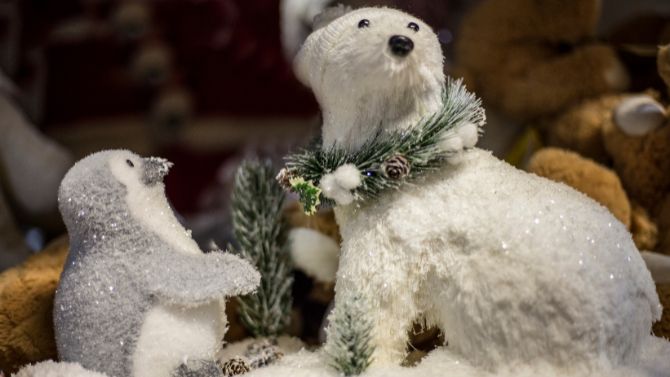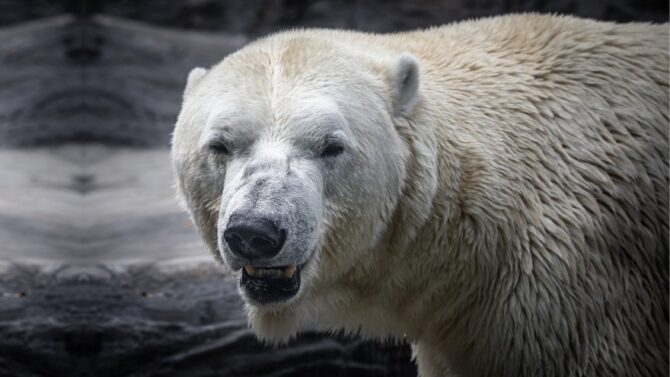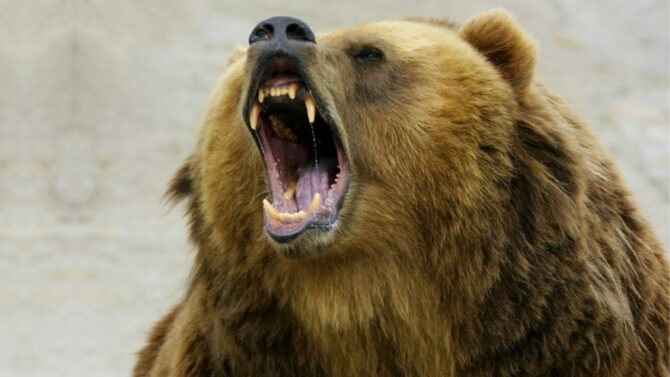As popular as bears are, their dietary needs can be confusing.
The different species vary in what they eat, and depictions like Winnie the Pooh licking honey don’t help much.
Are all bears confined to a honey diet? What do bears eat, anyways?
Generally, bears are considered carnivorous. However, there are some variations amongst the species, and only the polar bear is a true carnivore.
There is even a herbivorous species. Both plants and animals are a potential meal for bears.
In the following sections, we’ll look into the bear’s diet, as well as other necessary information on the place they occupy in the food chain.
What Do Bears Eat?
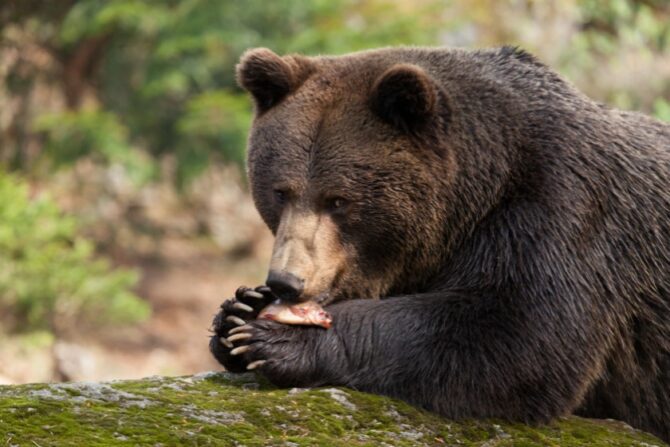
There are eight bear species in the world, all of which have their dietary needs.1
While the bear as an animal is often termed a carnivore, not all species fit into this category.
The polar bear is the only species that can be classified as carnivorous. Most species are omnivores, and there’s the herbivorous giant panda.
Getting a consensus on what these species like won’t be easy, but there are overlaps.
For instance, bears do eat honey, as Winnie portrays, but not every time.
Other meals include fish, fruits, roots, deer, and seals. A full list of the common foods will come in a later section.
Some bears can eat carrion, but that’s not always the first option, as they are not scavengers. They eat more live prey when they need meat.
What Do Wild Bears Eat?

Many bears live in the wild, while some are held captive in zoos and taken care of by human guardians.
Wild bears survive on their own, and what they find to eat is influenced by seasons, the environment, and the species in question.
The polar bear lives in the arctic tundra, and its main prey is the seal. It also feeds on walruses, small whales, as well as birds and fish.
It can also eat vegetation and dead animal matter, but only when it is starving.

By contrast, pandas eat mainly bamboo and have little taste for meat, which singles them out.2
The black bear and grizzly are both omnivores, with their diet being more plants than animals.
Summertime sees bears feeding more on fruits and berries, but during the spring, their plant matter consists of sedges, roots, grasses, and tubers.
These bears are honey eaters (which might explain why Pooh is brown).
Animals they feed on include insects and smaller ungulates like deer.
What Do Captive Bears Eat?

Bears in captivity have similar tastes to those in the wild. However, due to the differences in living conditions, captive individuals have distinct lifestyles.
They depend on their captors for their meals and do not face any interference from the weather or environment.
Their meal does vary depending on what their captors determine they need.
Most times, zookeepers regulate what these bears eat to control their weight.
Given their lifestyle, they don’t need to go through a process of hibernation.
Bears in captivity feed on berries as their main plant source. Their meat diet comes from salmons, chickens, and rabbits, among others.
Captors often feed whole animals to these bears so they can gain every possible nutrient, including calcium, from the bones.
What Do Baby Bears Eat?
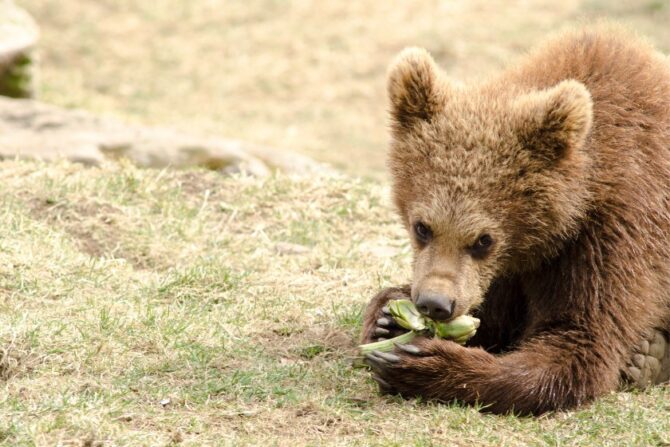
Following the mammal tradition, wild bear cubs depend on their mothers for survival across all the species.
These cubs are born fragile, and for 5 months, they stay in the den and feed on milk from the mother.
Even after their introduction to the outside world, the transition from milk to more solid food takes time.
They combine milk with solid food supplied by their mother for a period.
These baby bears stay with their mother for years till they gain independence and can forage on their own.
Cubs in captivity are often separated from their mother, and so they depend on their captors, who become their substitute “mothers.”
Captors start by feeding them milk replacements, then gradually introduce bear formula and puppy chow. They also take soft fruits.
How Do Bears Find Food?
Bears have a certain routine each year. During winter, they go into hibernation, which can last for around 7 months.3
They don’t sleep off during this period but have ways of reducing metabolism to survive, which includes not eating.
Because their mode of hibernation differs from smaller animals like hedgehogs, some experts prefer to term theirs as torpor instead.4
In preparation for the period of inactivity, bears in the wild eat a lot during the summer.
They’re constantly on the lookout for food from their waking moments till when they sleep.
These creatures are diurnal, so all activities are done in broad daylight. To help it achieve its eating aim, bears possess strong senses.
Their eyesight is like that of humans and enables them to see food.
The sense of sound is even better, helping them pick up the frequency from afar.
Having said that, neither sight nor hearing is as strong as the sense of smell.5
It is said to be nine times stronger than a bloodhound and 2,100 times stronger than a human!
Not surprisingly, the bear relies on the sense of smell more than others to find prey.
They can smell you miles away but don’t necessarily attack when they do.
The bear forages, spending the bulk of its hours looking for food. Given the need to store fat for winter, feeding is a primary aim.
The foraging tactics and strategies vary based on the species. Pandas spend up to 16 hours looking for bamboo.
The Black and grizzly bears spend less, prioritizing plants over animals.
Polar bears ambush seals and other prey. Many bears go fishing, using their mouth as a tool.
Do Bears Have Predators?
Bears aren’t meant to be trifled with, which explains why they are at the top of the food chain.
However, they have their enemies, particularly at the juvenile stage.
Baby cubs are more vulnerable to attack from top predators like tigers, wolves, bobcats, cougars, and coyotes.
Adult bears are aggressive, fighting off any animal that may try to attack. While it isn’t termed the king of animals, it certainly rules in its habitat.
That said, a pack of wolves can pose a threat to a bear. Tigers are also known to ambush adult bears whenever their habitats cross.
Humans are also enemies of these mammals. For a long time in history, humans have hunted bears both for meat and fur.
The gallbladder is medicinal, another reason bears get hunted down.
Do Bears Eat Humans?
Bear attacks are uncommon but not non-existent, as statistics have shown.6
The most dangerous species around North America is the polar bear, followed by the grizzly.
Black bears are easier to fight off and would rather stay away, but the case is different with the polar bear.
However, even the most dangerous bears don’t eat humans. Though they have a taste for meat, bears don’t see humans as prey.
Incidents of mauling are not for hunting purposes.7
Bear Diet: List of Bear Food
- Bamboo
- Small whale
- Fish
- Berries
- Grasses
- Seal
- Walrus
- Honey
- Insects
- Larvae
- Fruit
- Deer
- Carrion
Related: Do Bears Eat Wolves? Or Vice Versa?
Frequently Asked Questions
Will bears eat carrots?
Many bear species are omnivores, and black bears have a taste for many plants, including carrots. Rabbits aren’t the only carrot lovers; even black bears do. They also feed on melons, tomatoes, and squashes.
What can a bear not eat?
While bears have a variety of diets to choose from, not everything is good for them. They can’t eat a large number of grapes, for example, as they can be poisonous. Some human food, like chocolates, is also toxic to bears.
What is a bear’s favorite food?
A bear’s preferred food depends on its species. The panda feeds solely on bamboo. Polar bears have seals as their preferred prey. The black and grizzly do not necessarily have favorites, but they do feed on more plants than animals.
Final Thoughts
There’s more to the bear’s diet than licking honey and even more than simply terming them carnivores.
Each species ought to be studied, along with its environment, age, and climate, to know what a particular bear will feed on.
Bears sometimes have conflicts with humans, but fortunately, we’re not prey to them.
References & Notes
- The Eight (8) Bear Species of the World. Bear With Us.
- Why did the panda’s ancestors ditch meat for bamboo? Discover Magazine.
- Do Bears Really Sleep All Winter? Alaska Department of Fish and Game.
- Do Bears Really Hibernate? National Forest Foundation.
- A Bear’s Incredible Sense of Smell. The Chronicles of Daisy Crocket.
- Bear Attack Statistics of North America. BatchGeo Blog.
- Polar bear kills woman and boy in Alaska village. BBC News.

